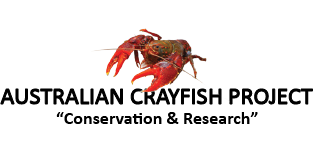Spiny freshwater crayfish from the Euastacus genus are an inconspicuous casualty of the widespread and enduring bushfires that profoundly impacted Australia over 2019/20. As with other freshwater animals, spiny crayfish were not only directly impacted as the bushfires swept over the landscape but also following subsequent rainfall and runoff that has delivered burnt timber, ash and sediment into waterways from burnt areas. Additionally, loss of vegetation canopies over cool flowing streams can have devastating impacts on crayfish that require cool waters. These impacts may continue to impact these species for months and even years and threaten ongoing survival. Twenty two Euastacus species were identified as priority species impacted by the devastating 2019/2020 bushfires. Astacological surveys of these 22 Euastacus species was funded from a grant to Aquasave–NGT, provided under the Australian Government’s Wildlife and Habitat Bushfire Recovery Program. It was fantastic that the Federal Government showed their concern for the environment and our endangered spiny crayfish and supported this project. Nick Whiterod, Aquasave-NGT was our team leader on this project and as part of this project I was able to research 18 of these priority species.
The project involved checking every site that each species is documented as occurring in and investigating the species current health and prosperity at that site. The Australian Crayfish Project has previously checked all these species at each of the known sites so we have the ability to compare previous research results with current results. The Project was a real “Eye Opener” and documents just how vulnerable to extinction our Euastacus crayfish are.
Check out these Project brief results
1. The mud gully freshwater crayfish Euastacus dalagarbe
Dwarf Group Crayfish
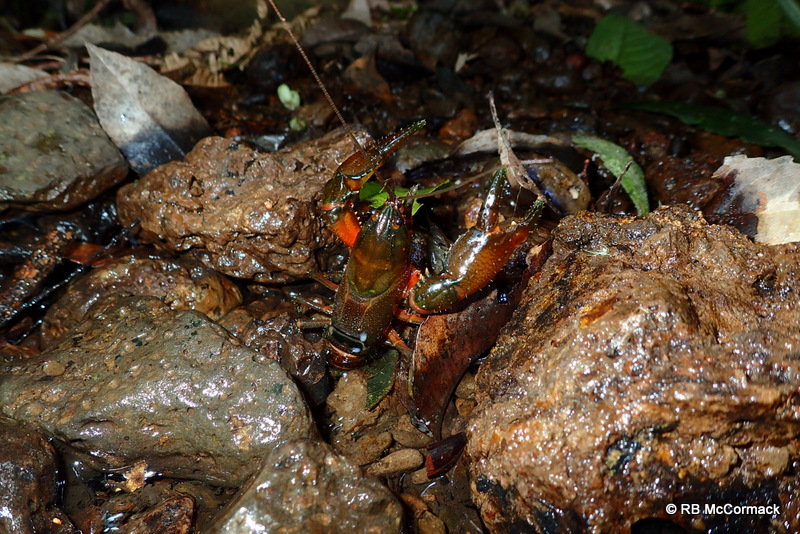
The 2019/2020 bushfires did not impact this area but the extended preceding drought has had a significant impact. Our 2020 survey indicated many of the smaller feeder streams were still dry or had low flows. The main streams like Brindle and Sheepstation creeks seemed to be flowing at normal capacity, yet many smaller streams were significantly reduced in flows.
Euastacus dalagarbe satisfies the IUCN Red List criteria for listing as Critically Endangered, CR B1+2(a), (b) iii, based on: an EOO , <100 km2 (72.25 km2), severely restricted and fragmented distribution (five known headwater streams, in two drainage divisions/all within Gondwana Rainforest = 1 site), and anticipated decline in area, extent and/or quality of habitat and EOO due to climate change, with threats from rising water temperatures, bushfire and drought.
2. The blue-black freshwater crayfish Euastacus jagabar
Dwarf Group Crayfish
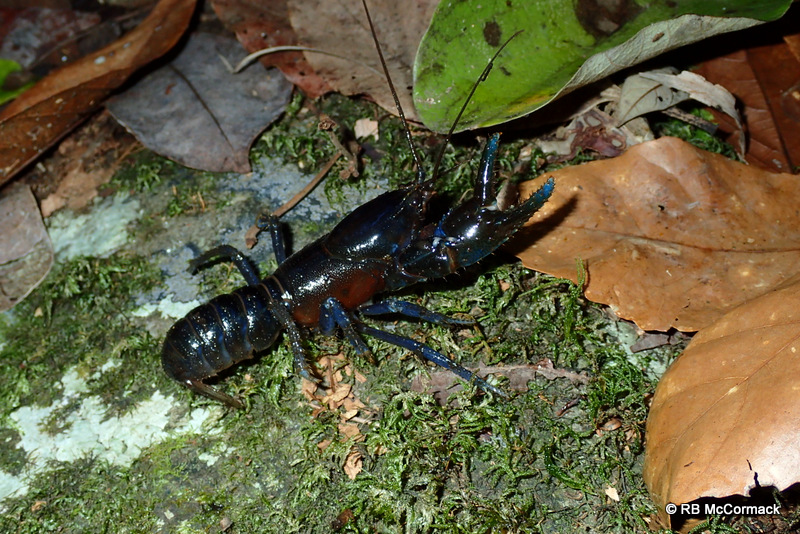
The 2019/2020 bushfires did not impact this area but the extended preceding drought has had a significant impact. Our 2020 & 2021 surveys confirm our alarm for this species. It has an extremely low population and unnaturally low fecundity. We expect this is the next Euastacus species in NSW to go extinct. Euastacus jagabar satisfies the IUCN Red List criteria for listing as Critically Endangered, CR B1+2(a), (b) iii, based on: an EOO , <100 km2 (0.256 km2) & AOO < 10 km2 (8 km2); severely restricted and fragmented distribution (1 site), and anticipated decline in area, extent and/or quality of habitat and EOO due to climate change, with threats from rising water temperatures, bushfire and drought.
3. The smooth freshwater crayfish Euastacus girurmulayn
Dwarf Group Crayfish
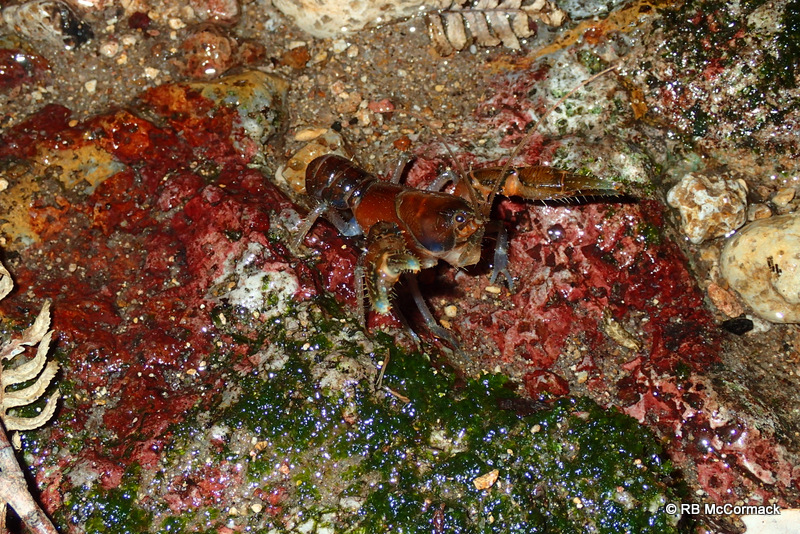
Generally, the areas where E. girurmulayn was found were areas that were relatively unaffected by the bushfires. The fires within the Whian Whian State Conservation Area and Nightcap National Park were medium severity. The areas that E. girurmulayn inhabits are permanently wet areas with both stream lily Helmholtzia glaberrima and Piccabeen or Bangalow Palms Archontophoenix cunninghamiana in abundance. These are the wet, lush green areas that are the least susceptible to a medium fire. The Extent of Occurrence of this species is currently unknown. Recent surveys by the ACP may have greatly increased the species distribution. Genetic analysis on samples from potentially new distributions is currently underway.
4. The bloodclaw crayfish Euastacus gumar
Intermediate Group

General population numbers of this species are significantly reduced. 2020-2021 surveys indicate the species has been severely impacted by both drought and bushfire. The conservation status of this species is currently Endangered, however, our genetic research was unable to decisively confirm distinct species for E. gumar and E. pilosus. The level of genetic divergence between the E. gumar and E. pilosus groupings (mean: 2.0%; range: 1.9─2.0%), was the lowest found between pairs of described species in this study. Nevertheless, there was only limited variation within each group (mean intraspecific divergence: 0.2% for E. gumar; 0.1% for E. pilosus). Further work is needed to resolve the taxonomic relationship between the two species, with the strong possibility that E. pilosus is a variant of E. gumar. (Austin et al 2021).
5. The hairy Cataract crayfish Euastacus pilosus
Intermediate Group
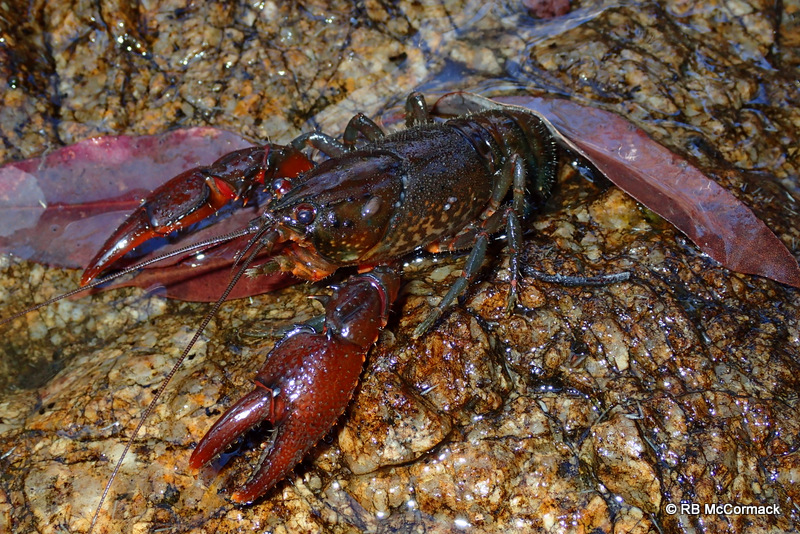
General population numbers of this species are significantly reduced. 2020-2021 surveys indicate the species has been severely impacted by both drought and bushfire. The conservation status of this species is currently Endangered however our genetic research was unable to decisively confirm distinct species for E. gumar and E. pilosus. The level of genetic divergence between the E. gumar and E. pilosus groupings (mean: 2.0%; range: 1.9─2.0%), was the lowest found between pairs of described species in this study. Nevertheless, there was only limited variation within each group (mean intraspecific divergence: 0.2% for E. gumar; 0.1% for E. pilosus). Further work is needed to resolve the taxonomic relationship between the two species, with the strong possibility that E. pilosus is a variant of E. gumar. (Austin et al 2021).
6. The Jagara hairy crayfish Euastacus jagara
Dwarf Group
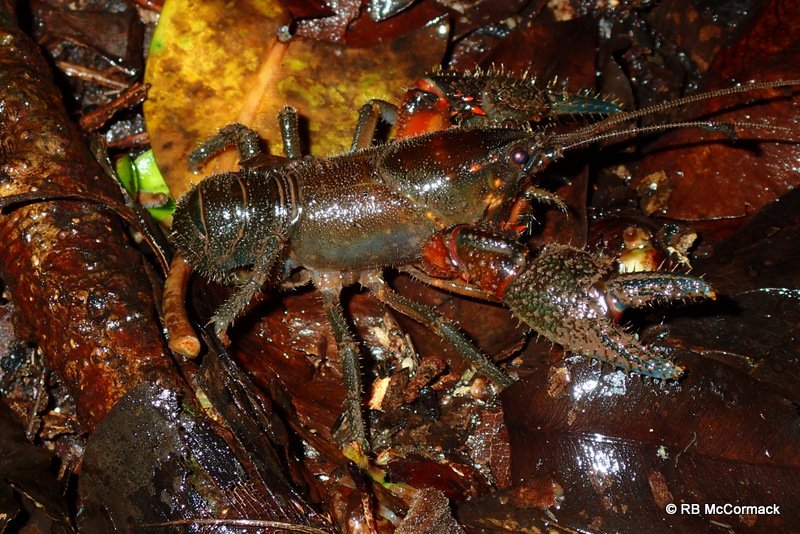
The 2019/2020 bushfires impacted part of the species distribution area, but the fires were low intensity ground fires which left the canopy intact. There was seemimgly little impact from the fires on the species. However, we only surveyed the known site of occurrence; just a few kilometres away the fire may have been very severe with unknown consequences to this species from that area. Our preliminary survey of the distribution area in January and February 2021, indicated that at the top of the distribution the species is secure with healthy populations, however, at lower altitudes all indications are that the species distribution has significantly contracted since 2009. Current status is critically endangered.
7. Sutton’s crayfish Euastacus suttoni
Giant Group
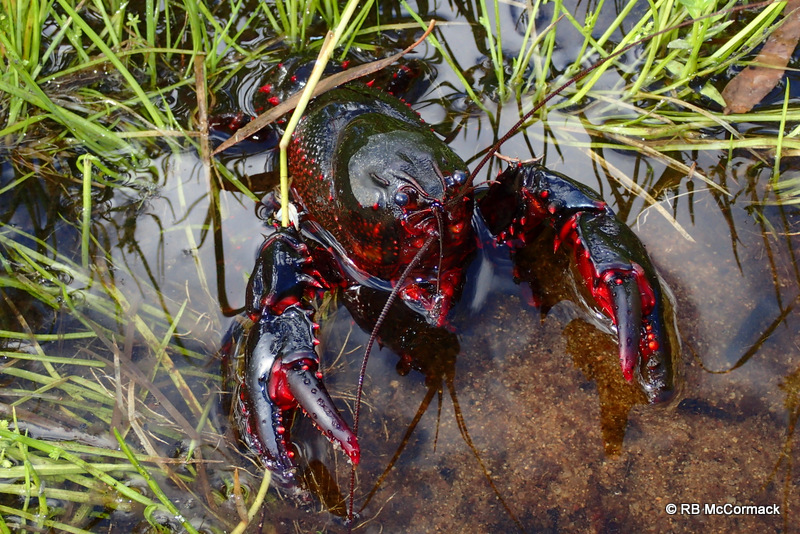
Our surveys of this species was a real “Eye Opener”. As one of the Euastacus species with the largest distribution, the ACP has not studied it intensively as we have done with the rarer species. Most ACP research is related to by-catch when researching other species. That was a big mistake! Our surveys over 2020-2021 discovered that this species has had a major distribution decline; of all the documented sites of occurrence, at only 38% of those sites the species still exists. Since the original historic records of this species, widespread land clearing over generations without any regard for native riparian vegetation has created critical damage to the natural ecology leading to a decline in E. suttoni’s distribution and abundance. This decline has been accelerated by the 2019/2020 bushfires. Conservation status unknown and needs immediate review. Unfortunately, unless something is done immediately to reverse the current downward population trajectory; Euastacus suttoni will be the first Euastacus species to become extinct in Queensland!
8. The small Crayfish Euastacus spinichelatus
Dwarf Group
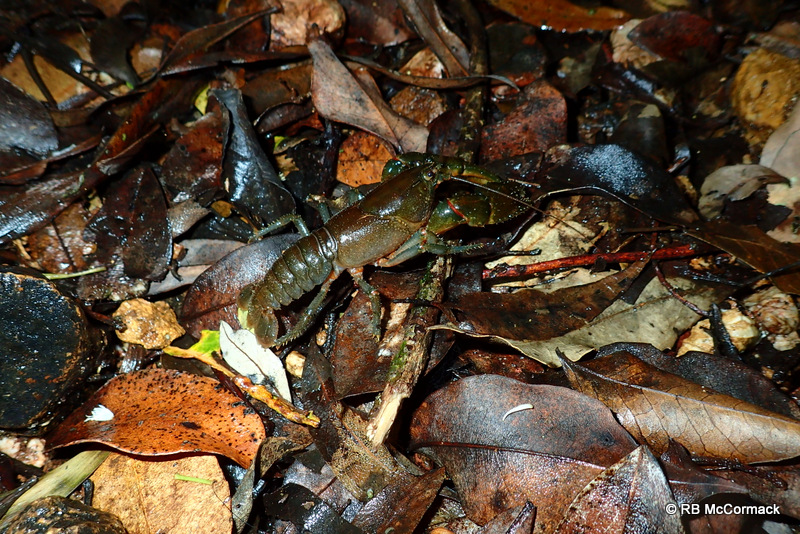
This is a dwarf group crayfish but unlike most dwarfs, at the top of the catchment it can be captured in traps. This research project discovered an alarming situation. The species is now locally extinct at its Type Locality and Paratype location as well as numerous other documented sites of occurrences. The species clearly has zero resilience to both drought and very high severity bushfire. Current Status Endangered. Euastacus spinichelatus’s original EOO (pre 2019) has greatly reduced due to new knowledge and climate change over the last few years with many of its high altitude upper catchment streams drying for the first time, extinguishing the creeks population. For those streams that didnt dry up, very high severity bushfires also extinguished the species populations (McCormack 2021). Add further population declines due to future intense bushfires, heat waves, droughts and floods, plus overfishing and exotic species, the long term future for this montane species remains grim.
9. The Gamilaroi Crayfish Euastacus gamilaroi
Intermediate Group
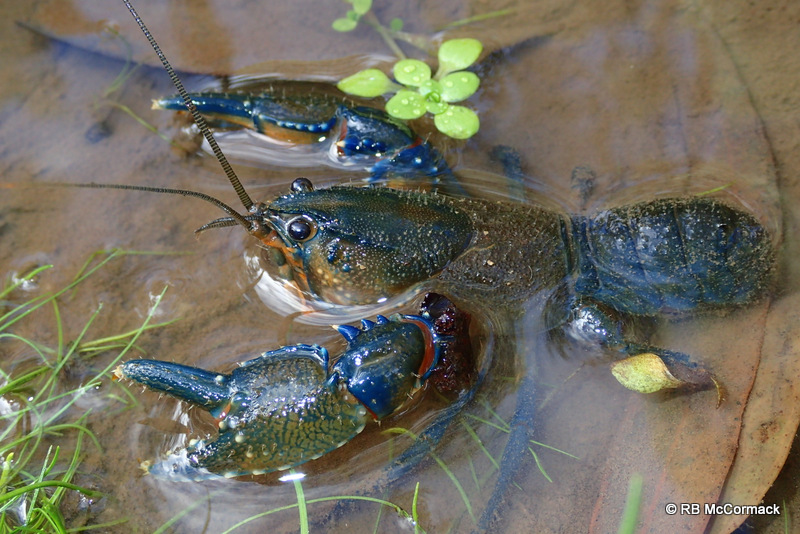
Our research project was instigated to examine the consequences of the 2019/2020 mega bushfires on the critically endangered Euastacus gamilaroi. Our surveys of the distribution area discovered, that low to medium bushfire had little to no impact on the species but high severity bushfire was an extinction level event. Current status is Critically Endangered
10. The small mountain crayfish Euastacus simplex
Intermediate Group

Our surveys of this species was another real “Eye Opener”. As one of the Euastacus species with a large distribution the ACP has not studied it intensively as we have done with the rarer species. Most ACP research is related to by-catch of other species we were researching. That was another big mistake! Our surveys over 2020-2021 discovered that this species has had a major distribution decline, at the majority of historic documented sites the species is now extinct. Since the original historic records of this species, widespread land clearing over generations without any regard for native riparian vegetation has created critical damage to the natural ecology leading to a decline in E. simplex’s distribution and abundance. This decline has been accelerated by the 2019/2020 bushfires. Conservation status unknown and needs immediate review.
11. Morgan’s crayfish, Euastacus morgani
Intermediate Group
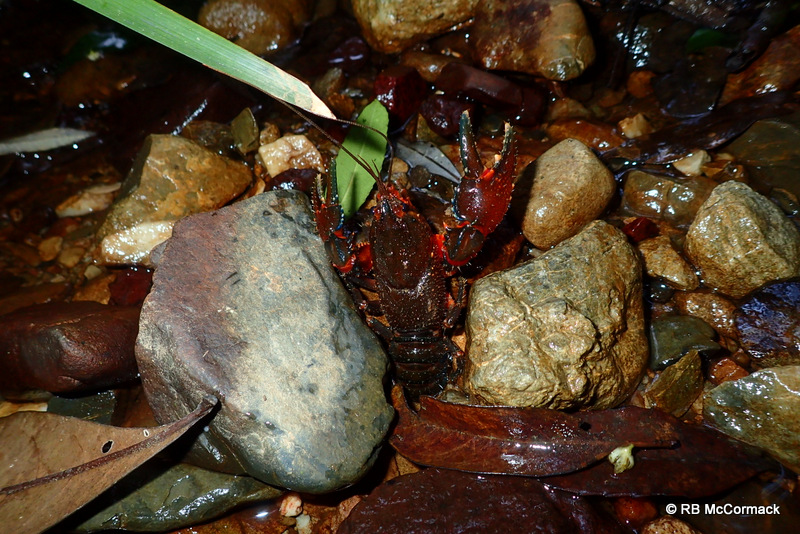
The Type material site was unburnt and the streams in the area unimpacted. The streams seemed to be in pristine condition and I did not notice anything different from back in 2007 and 2008 when we last surveyed the area. Conservation status unknown. Very little information is known on this species and further research is warranted.
12. The Tianjara Crayfish Euastacus guwinus
Intermediate Group Crayfish

Despite 100% of the species distribution area being impacted by very high intensity bushfires, good news is that this species has the capacity to survive a very high severity bushfire event. Also, despite the preceding drought that culminated in the bushfire the species population is strong and there was no discernible change in population numbers over the last 10 years or so. However, this species requires immediate protection from illegal fishing. All options need to be investigated to provide protection for this species. Conservation status Critically Endangered
13. 1 Ellen Clarks crayfish Euastacus clarkae
Intermediate Group

Both drought and bushfire has impacted this species with the species currently absent from many of the smaller feeder streams where once it was abundant. High severity bushfire is an extinction level event in the smaller streams for this high altitude montane species. Conservation status critically endangered.
14. The many-bristled crayfish Euastacus polysetosus
Intermediate Group
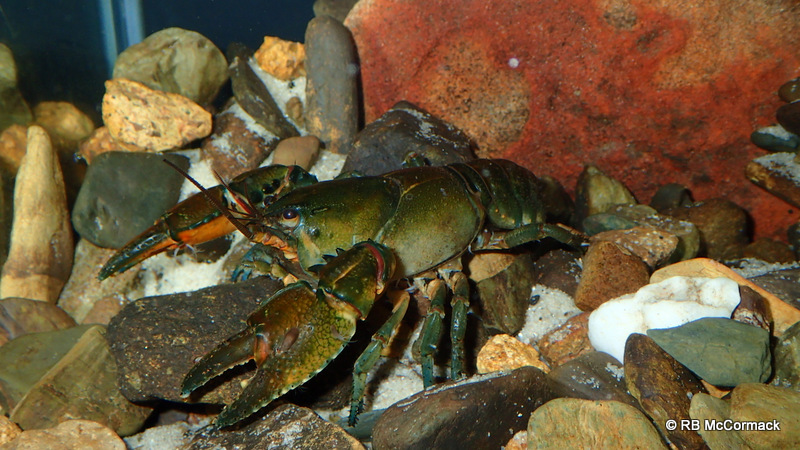
Both drought, bushfire and floods have impacted this species. The extent of the impact is still unknown as much of the distribution area is still inaccessible. Research continues on this species. Conservation status endangered
15. Clayton’s crayfish Euastacus claytoni
Intermediate Group

Unfortunately, E. claytoni population numbers have declined over time throughout its previous distribution area; today much of its former distribution area has been severely habitat altered. Land clearing to the streams edge over generations to create grazing paddocks has resulted in the streams becoming unsuitable for E. claytoni. Seemingly, the main populations only persist today in the protected Parks and State Forest. Unfortunately, unless something is done immediately to reverse the current decline; Euastacus claytoni will continue to decline in abundance and distribution. Interestingly within E. claytoni, there was significant geographical variation, with the southern range of the species being quite divergent from four northern range samples (mean: 4.4%; range: 4.2‒4.6%). This pattern of divergence, is consistent with the possibility that the northern (from Murrumbidgee River and Shoalhaven River basins) and southern (Snowy River and East Gippsland basins) populations of E. claytoni represent cryptic speciation (2 distinct species). Conservation status endangered but needs review.
16. Bidhawal Crayfish Euastacus bidawalus
Intermediate Group

Fortunately, Euastacus bidawalus is a robust species with the capacity withstand and survive an extreme bushfire event. We could not discern any significant reduction in populations from surveys prior to the mega bushfires and those surveys afterwards. Conservation status endangered
17. The Orbost spiny crayfish Euastacus diversus
Intermediate Group

Much of the distribution area was devastated by high intensity bushfire. Initial results indicate that population numbers have reduced but further research is required on this species. Conservation status endangered.
18. Euastacus sp.n.1
Intermediate Group
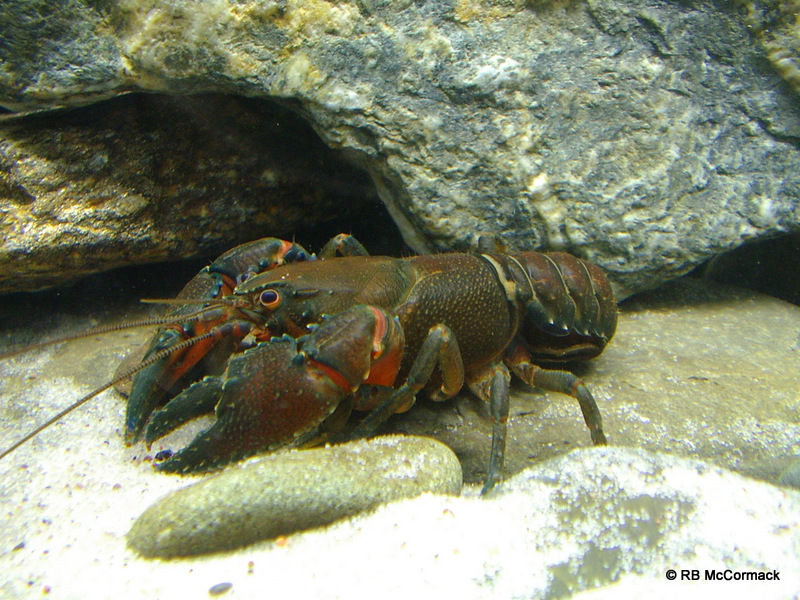
This is a currently undescribed species from the Bemm River drainage in East Gippsland, Victoria. Some of the distribution area was devastated by high intensity bushfire but most of the immediate riparian zones did not burn to any great extent. Initial results indicate that population numbers have reduced but otherwise all’s good. Austin et al., 2021 confirmed the validity of the species and a description in currently in preparation (McCormack and Fetzner in prep)
References
Austin, Chris & Whiterod, Nick & McCormack, Rob & Raadik, Tarmo & Ahyong, Shane & Lintermans, Mark & Furse, James & Grandjean, Frederic. (2021). Molecular taxonomy of Australia’s endemic freshwater crayfish genus Euastacus (Parastacidae), with reference to priority 2019–20 bushfire-impacted species
McCormack, R.B. (2021). Astacological Survey Report 8 to Aquasave-NGT. Euastacus spinichelatus Surveys within Upper Manning, Hastings and Macleay rivers, NSW. Survey 8, Issue 1. Australian Aquatic Biological P/L, Port Stephens, NSW.
McCormack R. B., Fetzner J. W. (in prep). Euastacus coughrani sp. n., new species of Euastacus crayfish (Crustacea: Decapoda: Parastacidae) from the Bemm River, Victoria, Australia. Freshwater Crayfish.
